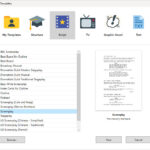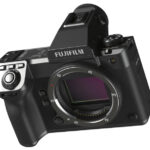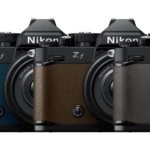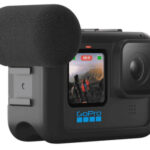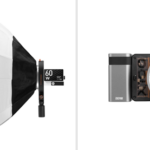Ah the glory days of standing at the end of the main straight a Wanneroo Park raceway, with an angry swarm of Group C Touring cars hammering towards you at up to 260 kph. Think Brock, Moffat, Grice, Johnson and Co.
Your only protection is a Pentax KX camera with a 200mmm lens and a roll of 400ASA AGFA colour film.
You need to get at least one money short to make it all worthwhile; that is pay for the day, the cost of film and processing.
This is how my career in photography started back in the 70s along with my late elder brother Stephen. How it has evolved from there!
So, it was somewhat nostalgic when I met with the WA rep from CR Kennedy at the local Bunbury Camera House and he passed me a box containing the latest from Pentax, the I7.
You see, this camera is, as far as I can tell, the first 35mm FILM camera from a major manufacturer in something like 20 years. Yes, real film from the likes of Kodak, AGFA and Ilford.
Regular readers may remember I wrote a piece 18 months ago about the resurgence of film, especially among younger people, who were buying throwaway film camera like there was no tomorrow.
Well Pentax it appears has decided that they’d expand on this trend with the I7, and the company has done a remarkable job in blending new technologies with serious “old world” charm.
My research tells me they even brought back one of its veteran designers to assist in the making of the I7, one Suzuki Takeo. As a consequence they have successfully melded all the old style elements such as the buttons, dials, flash and lens into a beautiful but functional piece of equipment.
Marry Old With New
Despite the attempt at this olde world approach, Pentax has done some serious thinking about how the I7 approaches photography, however.
The most obvious is in the image format itself. The original 35mm format was a landscape 36mm by 24mm, but in the I7, Pentax has taken a new approach by making it a vertically oriented half frame format; in other words, the film image is vertical and 17mm wide.
As well as getting twice as many shots per roll of film, this method also acknowledges that many people coming to the I7 will be used to shooting vertical images on their smartphone, and thus make the transition to a film camera much easier.
Technical Stuff
The lens is a fixed focus 25mm F/3.5 making it equivalent to 37mm in the 35mm format that Pentax says uses the same technology as its SLR lenses to give clear sharp images. For shooting there are autoexposure, program and “Bokeh” modes and in addition, manual zone focussing and a macro setting, as well as good old fashioned exposure compensation and ISO dials.

One aspect that does take you back is the manual film advance lever and rewind system. There is just something about taking a shot and flicking that lever!
One thing I do recommend (as always) is that a good read of the relevant language sections of the manual is a good idea as there is a large number of buttons and dials to absorb – especially if you are used to automatic everything!
Film

It was a weird feeling loading a film cannister. Over the years, I must have loaded thousands of these from my original Minolta SRT-101 through to the Pentax KX, my inherited (for a short time before the Death Duty ogre took them) Leica M2 and Rollieflex and even a Nikonos underwater camera.
But it has been so long I still read the relevant manual pages as the last thing I wanted was to load the film and not have it “take up” on the sprocket and thus shoot a whole pile of nothing with the film still in the can!
To a camera buff, there is nothing quite like that feeling when you close the camera back, press the shutter release and pull the winding mechanism back and can feel that tension as the film rattles over the sprocket!
Using
The Pentax I7 is a snap to use and good fun too! At the end of the day it is a pretty basic camera, compared say, to my Canon 5Ds or Fujifilm X-S10. And that’s as it should be with a camera of this type. You want to be able to shoot great photos not spend time worrying about all the different possible settings.
Having said that, it is still good practice to do a quick check of the settings the camera is set to before clicking away. And one BIG thing – check the lens cap, as unlike a dSLR, you can shoot using the viewfinder and not realise it is still on! A trap for new players.
I cracked off a few shots with the Pentax I7 using a roll of Kodak 200ASA colour film and enjoyed the experience. For anyone wanting to get into photography that is a bit more “hands on” than pure digital allows, this is a great camera for that purpose.
At AUD$899 it’s not overly expensive (compared to a smartphone or base mirrorless model) and is also a fabulous camera to use if you want to get into the art of doing your own developing and processing – which I heartily recommend.
For more information see https://pentax.com.au/products/18926/pentax-17-hf-35mm-film-camera—silver—black and for a test drive, check out your local Camera House is my suggestion.




